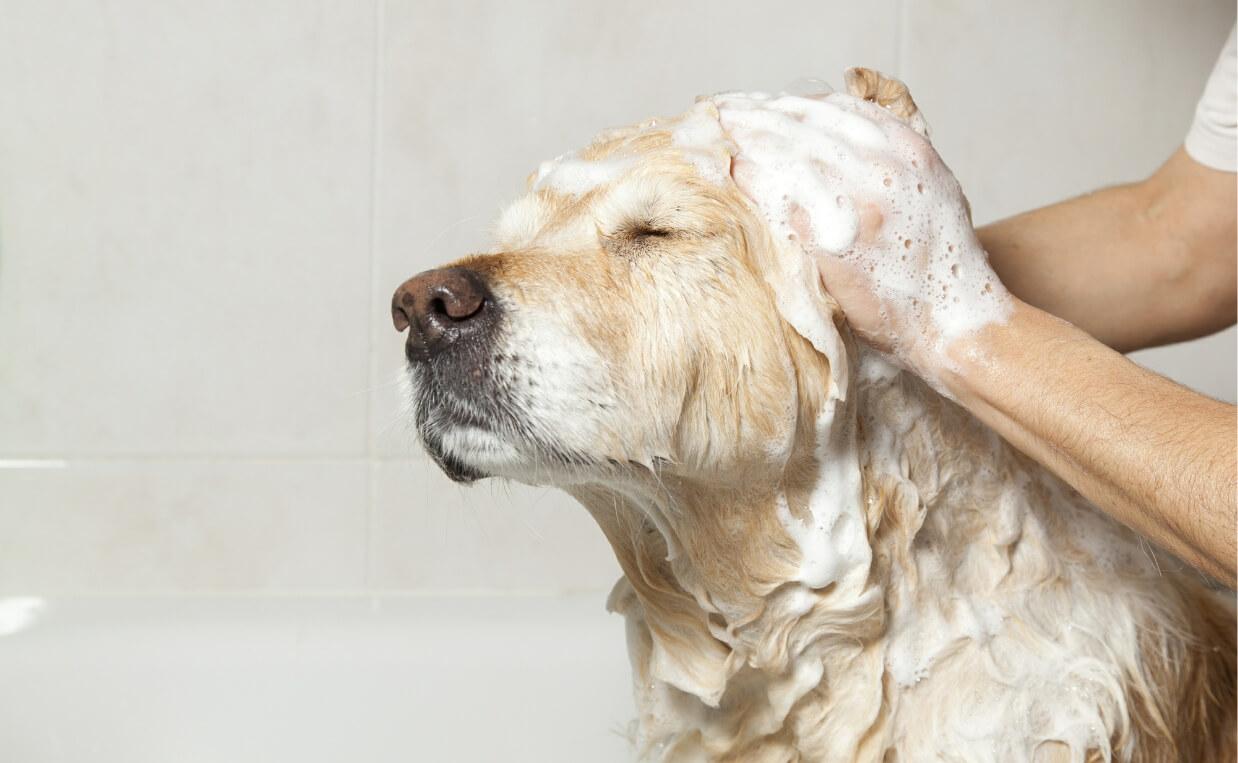
Keeping your dog groomed is an important part of being a dog owner. Groomed, clean dogs are happier because they are more comfortable. Grooming entails more than a bath and brushing – your dog needs regular teeth cleaning, ear swabbing and nail clipping. Some dogs have long hair so knowing how to deal with matted fur is essential for those breeds as well.
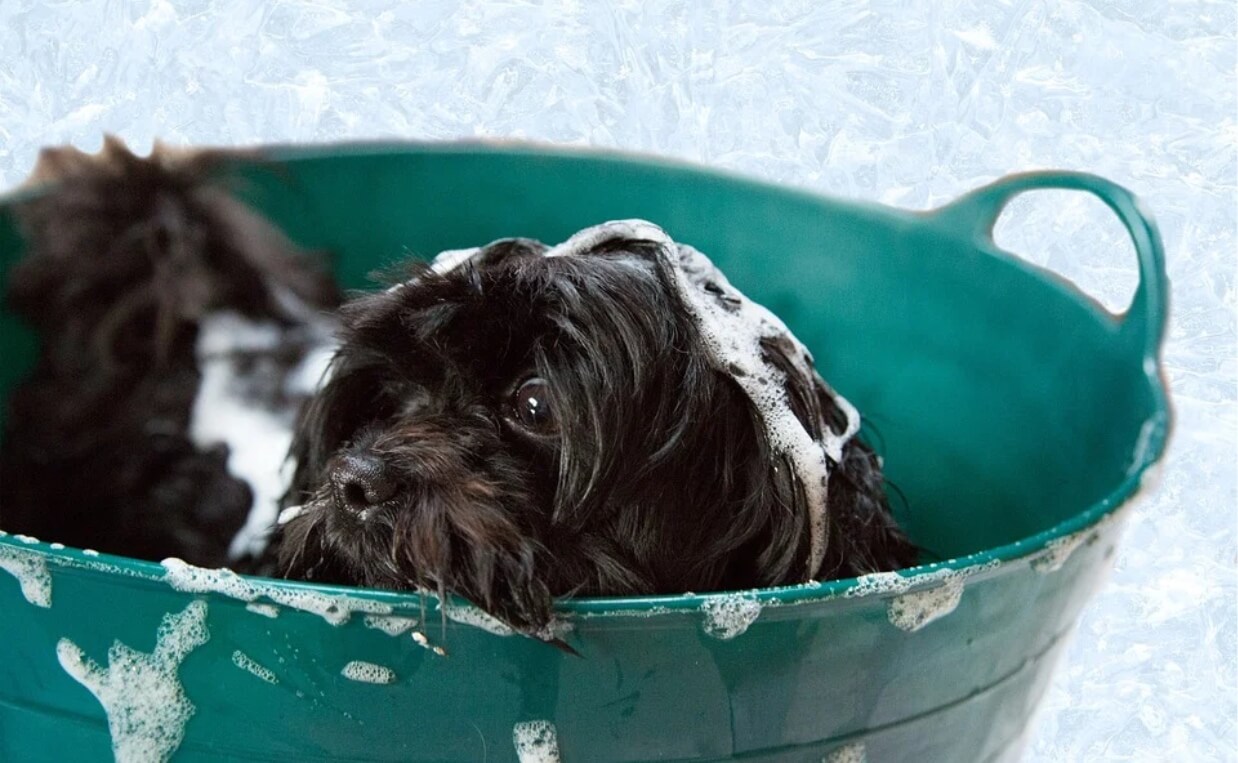
Dog Grooming Options
There are several options when it comes to dog grooming.
-
Take your dog to a professional dog groomer
Grooming your dog on your own isn’t for everyone. A professional dog groomer will have the right tools, will fit into your schedule, know how to handle an anxious or nervous dog, and have training and experience on how to groom all breeds correctly.
An advantage of hiring our professional groomer, Chris, is that she can usually work out a time when your dog would already be in attendance for daycare or boarding, making a grooming appointment very convenient.
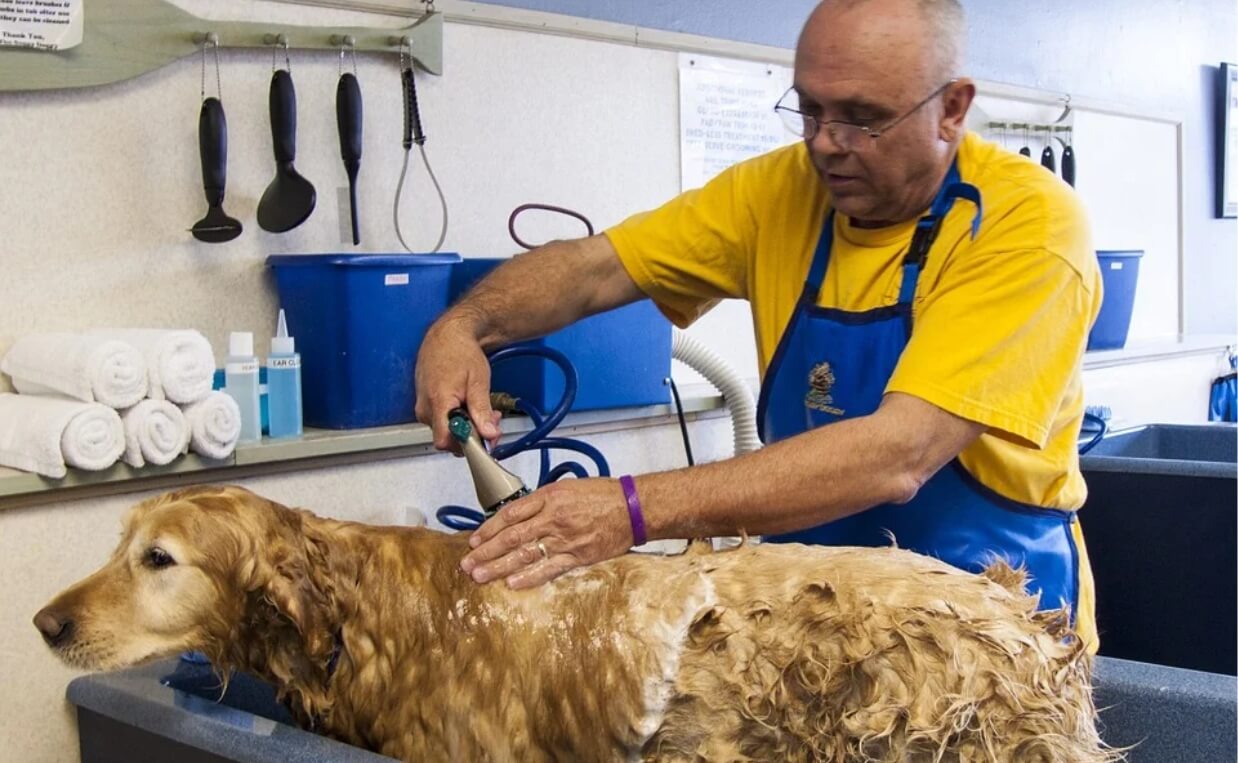
-
Take your dog to a self-serve dog wash facility
Self-serve dog wash facilities offer several advantages.
- You don’t have to make an appointment
- They have everything you need including a dog-washing tub, shampoo, rinse, ear cleaning supplies and toenail clippers
- They clean up the mess
- The washing stations are safe and are set up to restrain your dog without hurting them
- They have blow dryers
- They are usually less expensive than a professional groomer
Grooming your dog can be time-consuming and frustrating, especially if your dog is resistant, so keep this in mind.
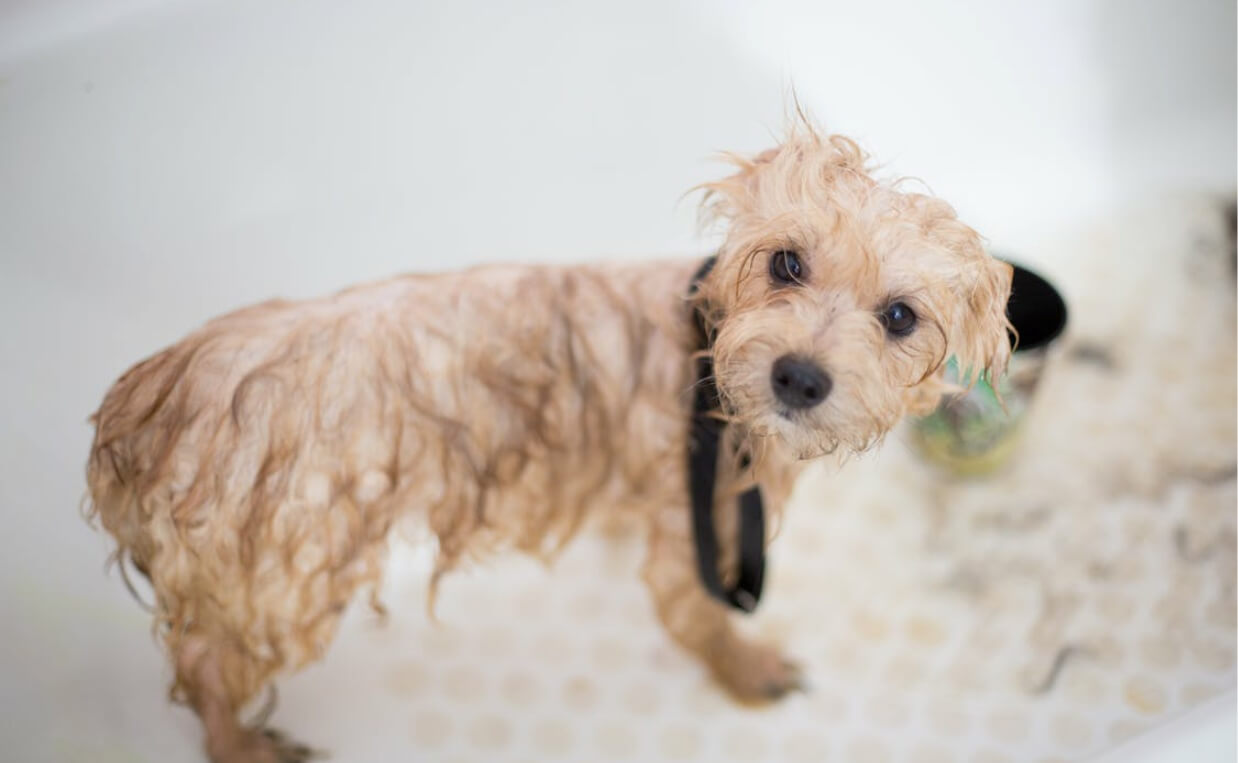
-
Do it yourself at home
Some dog owners prefer to groom their dog at home. While this can be a challenging proposition, it can be a money-saver.
Dog Grooming Equipment and Supplies
If you decide to try your hand at grooming your dog at home, you will need some equipment and supplies.
- Dog grooming kit (combs, brush, detangler, nail clippers and file)
- Good quality dog faucet sprayer
- Dog bath tub or wash basin that fits the size of your dog
- Dog shampoo and conditioner
- Dry towels
- Variable-speed blow dryer
- Styptic powder
- Medicated ear solution
- Clean cotton balls
- Long round-tip scissors
- Dog grooming restraint
Step-By-Step Instructions for Grooming Your Dog At Home
-
Gather all your dog-grooming tools
You will want to have all your equipment / supplies ready to work with and your grooming area clean. Make sure all your supplies are easy to reach – you don’t want to have to continually retrieve your supplies once you’ve started the grooming process.
-
Remove mats and tangles
As you calm your dog down and reassure them everything is going to be OK, look for mats and tangles that need to be resolved before shampooing. You can also use a detangler spray to help remove those matted or tangled areas. This is also a good time to check your dog over for injuries or illness.
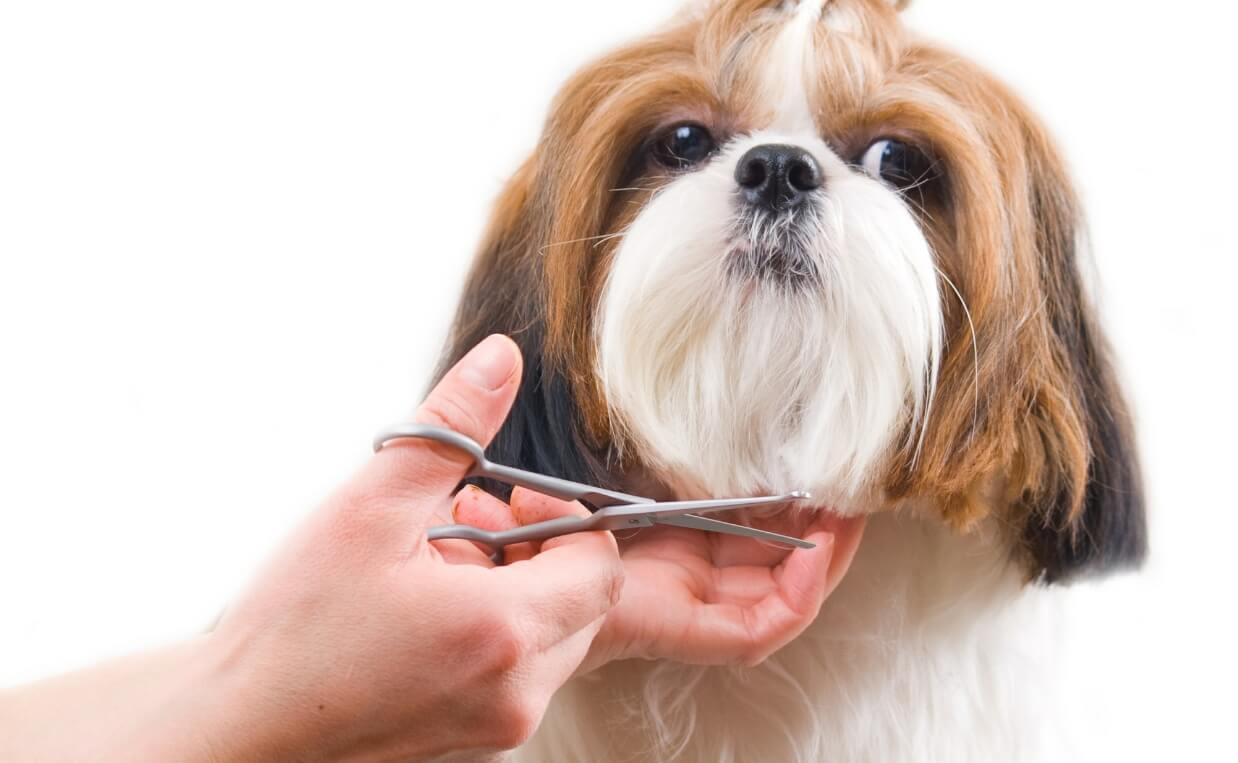
-
Pre-bath trim
If your dog’s fur requires it, clip or trim any hair that needs it. Long-haired breeds, for example, require more trimming around the chest, hocks, belly and pads of the feet. You can use dog-grooming shears or a regular pair of hair-cutting scissors.
-
Brush or comb your dog
Before every dog bath, you should make sure to give your dog a good brush-down. Long-haired breeds require more frequent brushing.
If your dog has short hair, you may want to consider a soft-bristle brush or a chamois cloth. These will be easier on your dog’s sensitive skin.
Start by combing or brushing your dog from the head to the rear and top to bottom. Make sure you comb the entire coat of hair, including the hair on the tail and head. Be especially careful when working near your dog’s face, eyes and ears.
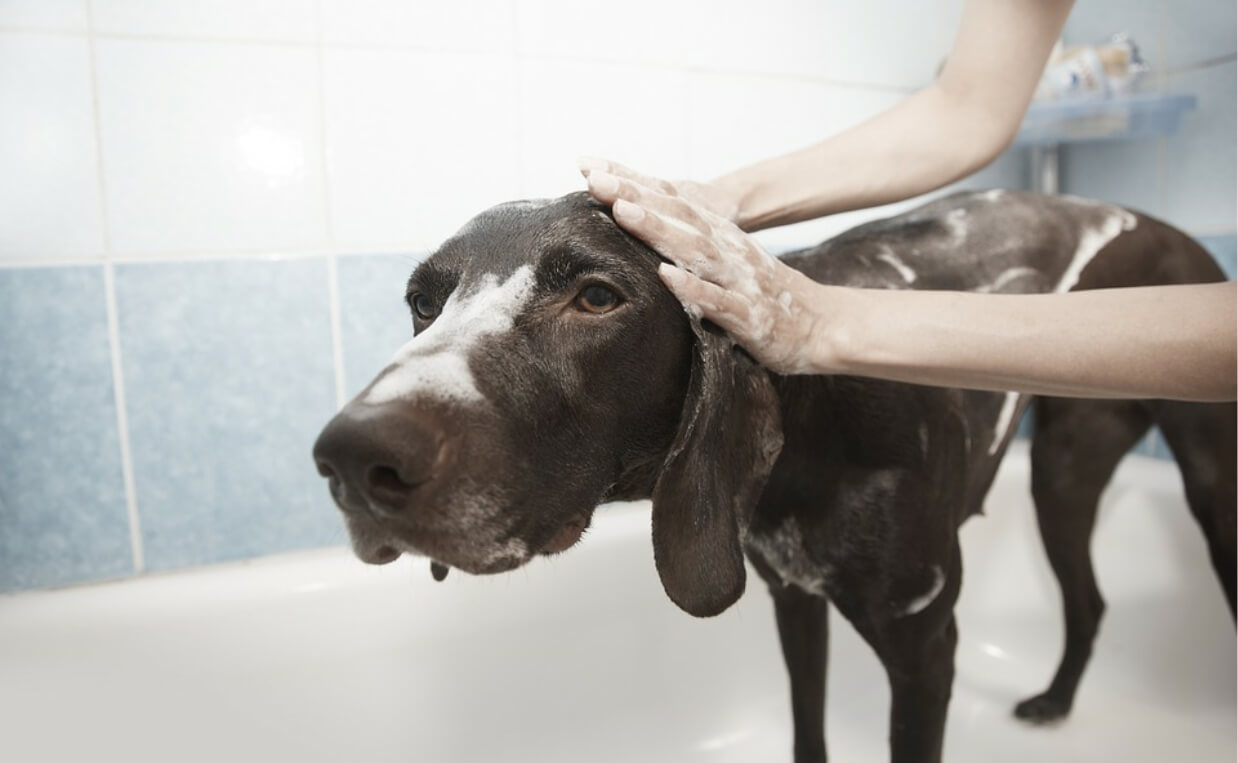
-
Bathe your dog
Some dogs love bath time and others need to learn to tolerate it. Be sure you use tepid water and go slowly at first. Give your dog lots of praise, encouragement and treats as a reward. Try to make the experience as pleasant and enjoyable as possible.
Here are some tips to make bathing your dog a little easier.
- Lay non-slip bath mats down first
- Use a shower head or faucet sprayer
- Use cotton balls to absorb water in your dog’s ears
- Ask your vet about the right type of shampoo and rinse for your dog
- Avoid contact with your dog’s eyes
- Gently massage the shampoo into your dog’s fur until it becomes a good lather
NOTE: Do NOT use shampoo designed for people on your dog. Canines and humans have different pH levels and skin sensitivities; human shampoo products are too harsh for dogs and can cause skin problems.
Once you’ve washed your dog, rinse well to make sure no suds remain. Apply a conditioner if so desired.
-
Dry your dog
Dry your dog’s coat with some dry towels. Follow up with a blow dryer on a very low or no-heat setting.
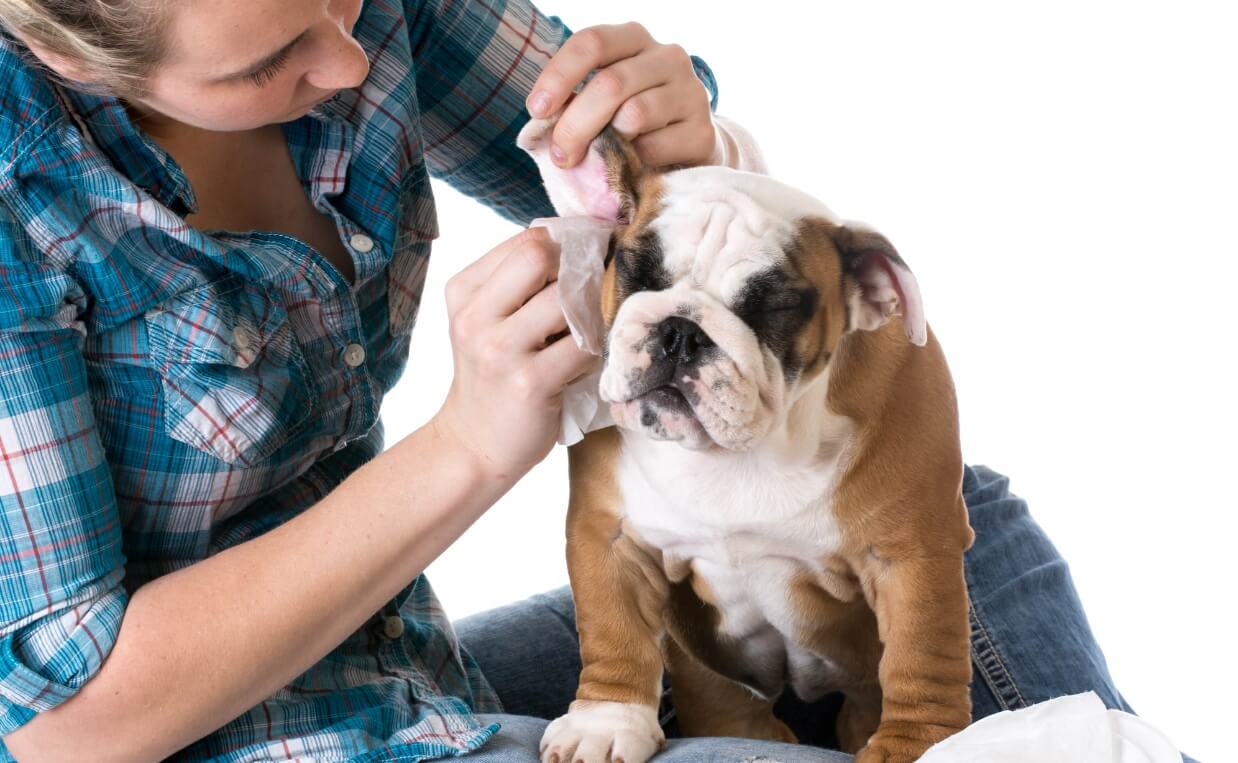
-
Clean your dog’s ears
A dog’s ears are extremely sensitive so be extra gentle when cleaning your dog’s ears. You want to make sure his or her ears are dry and free of wax build-up.
The ear of a dog has a unique structure; make sure not to go in too deep to avoid damaging the ear drum. The external canal just inside the ear is what needs to be cleaned. Dirt and wax build-up can cause irritation and poor air flow, leading to infection.
Frequent ear cleaning can reduce the chance of infection. Some breeds, such as cocker spaniels and basset hounds are at higher risk for ear infections.
The easiest way to clean your dog’s ears is to pour otic ear solution into your dog’s ears and massage the base of the ear gently to remove excess debris and wax. Be prepared – your dog may shake his or her head vigorously! Next, check your dog’s ear flap and clean it using cotton wads dapped in the ear solution.
NOTE: You should NEVER use Q-Tips in dog’s ears because it’s too easy to damage them. Use cotton balls or a soft cloth.
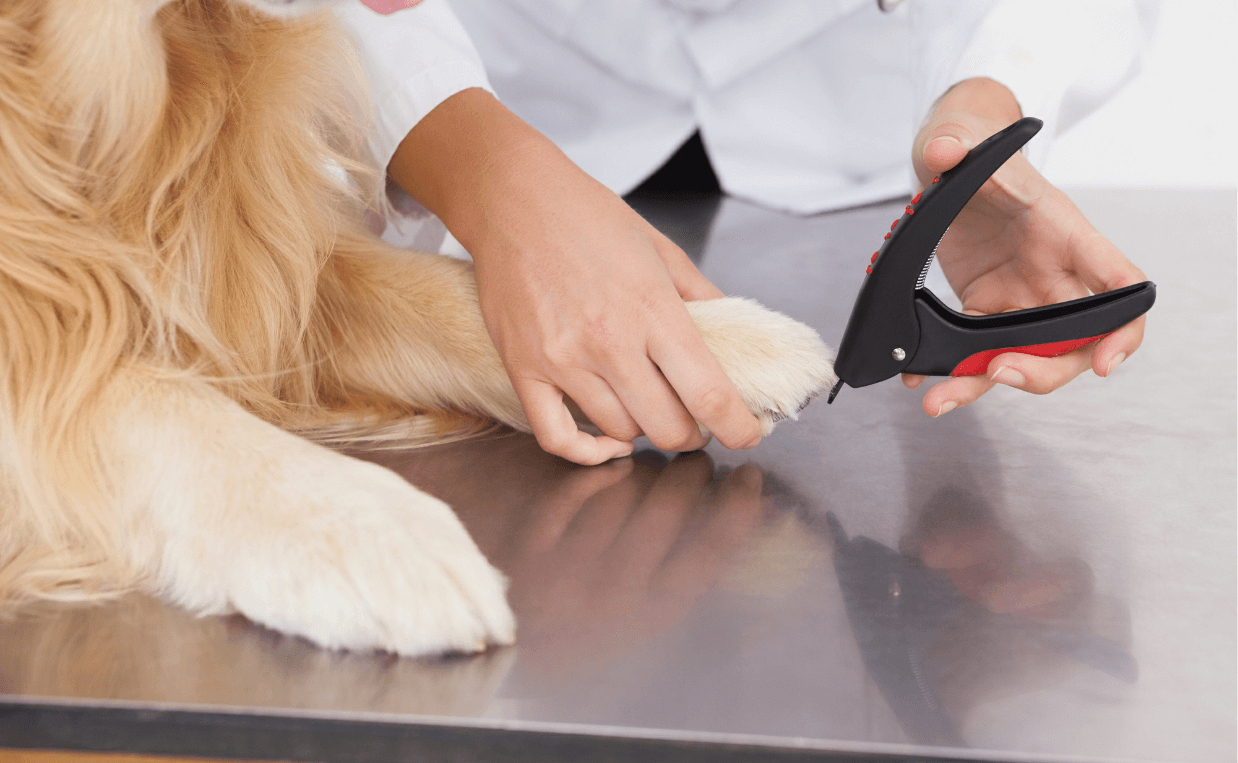
-
Trim your dog’s toenails
Most dogs don’t really like their nails being handled. However, keeping your dog’s nails trimmed is essential for their health. Try to get your dog used to having their feet handled by touching them from the time your dog is young. This will make the nail trimming process much easier in the future.
If you are new to nail trimming, it’s a good idea to have someone else hold your dog. Be careful to take small snips as you go; if you cut your dog’s nails too deep it will cut the quick and cause a lot of bleeding and discomfort for your dog. The quick is easier to see if your dog’s nails are light in color.
If you accidently cut the quick, quickly apply styptic powder and apply pressure to the wound. Avoid removing the clot after the bleeding has stopped.
Keep in mind trimming the nails regularly will keep the quick from growing longer inside the dead part of the nail. It is much easier to clip the quick and cause bleeding if this occurs. Trim your dog’s nails when they are softer after a bath. A dremmel is a good option unless your dog can’t tolerate the sound of the grinding.
That’s it!
Now it’s time to reward your dog with praise and treats.
If your dog seems fine and content, you’ve done a good job! Chances are your dog will not resist when it’s grooming time again.
However, if your dog seems to respond in a negative way, you may be using the wrong tools or being too rough. If you’re having a hard time, talk to your veterinarian about how to make grooming better or consider taking your dog to a professional.
Make sure to ensure your dog is groomed consistently on a regular basis. The more often your dog is groomed, the easier and more relaxed he or she will be.
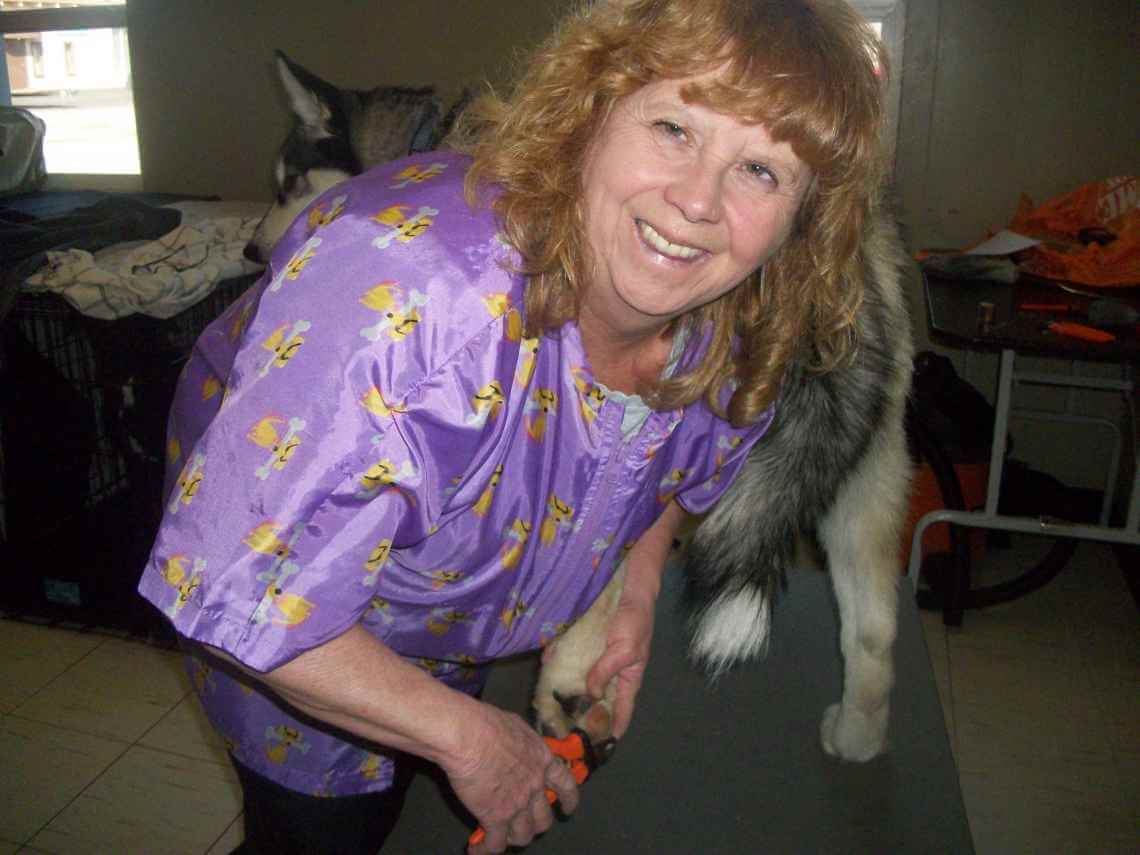
Canine Campus offers professional grooming services. Our expert groomer, Chris, has many years of experience and specializes in breed-specific grooming haircuts. She knows how to help dogs of all breeds and ages relax and enjoy their spa time. Chris uses a special “Furminator” process during bathing that greatly reduces shedding and provides a full report detailing the condition of your dog’s skin and coat, ears, and any health issues she notices.
Many of our dog grooming services are available without an appointment. Sometimes we are able to fit you in during your next daycare or boarding session.
Learn more about Canine Campus grooming services here or call us at 719-448-9600.

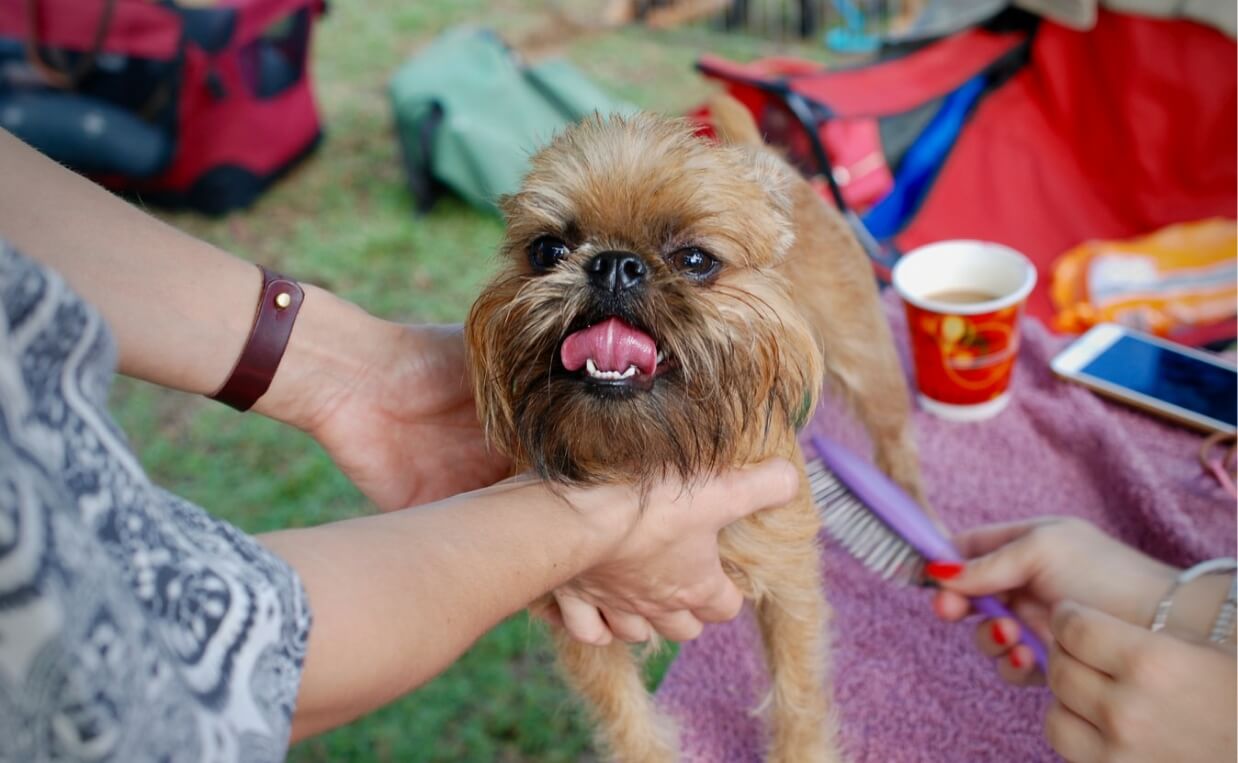
 7 Essential Holiday Grooming Tips for Your Dog (and Get $5 Off Coupon on Your Next Grooming Appointment)
7 Essential Holiday Grooming Tips for Your Dog (and Get $5 Off Coupon on Your Next Grooming Appointment) Why It’s Crucial that You Start Grooming Your Puppy Early and Regularly
Why It’s Crucial that You Start Grooming Your Puppy Early and Regularly A Stress Free Way to Trim Your Dog’s Nails
A Stress Free Way to Trim Your Dog’s Nails Why You Shouldn’t Shave Your Dog This Summer
Why You Shouldn’t Shave Your Dog This Summer How Often Should You Brush Your Dog’s Teeth?
How Often Should You Brush Your Dog’s Teeth?






Leave a Reply